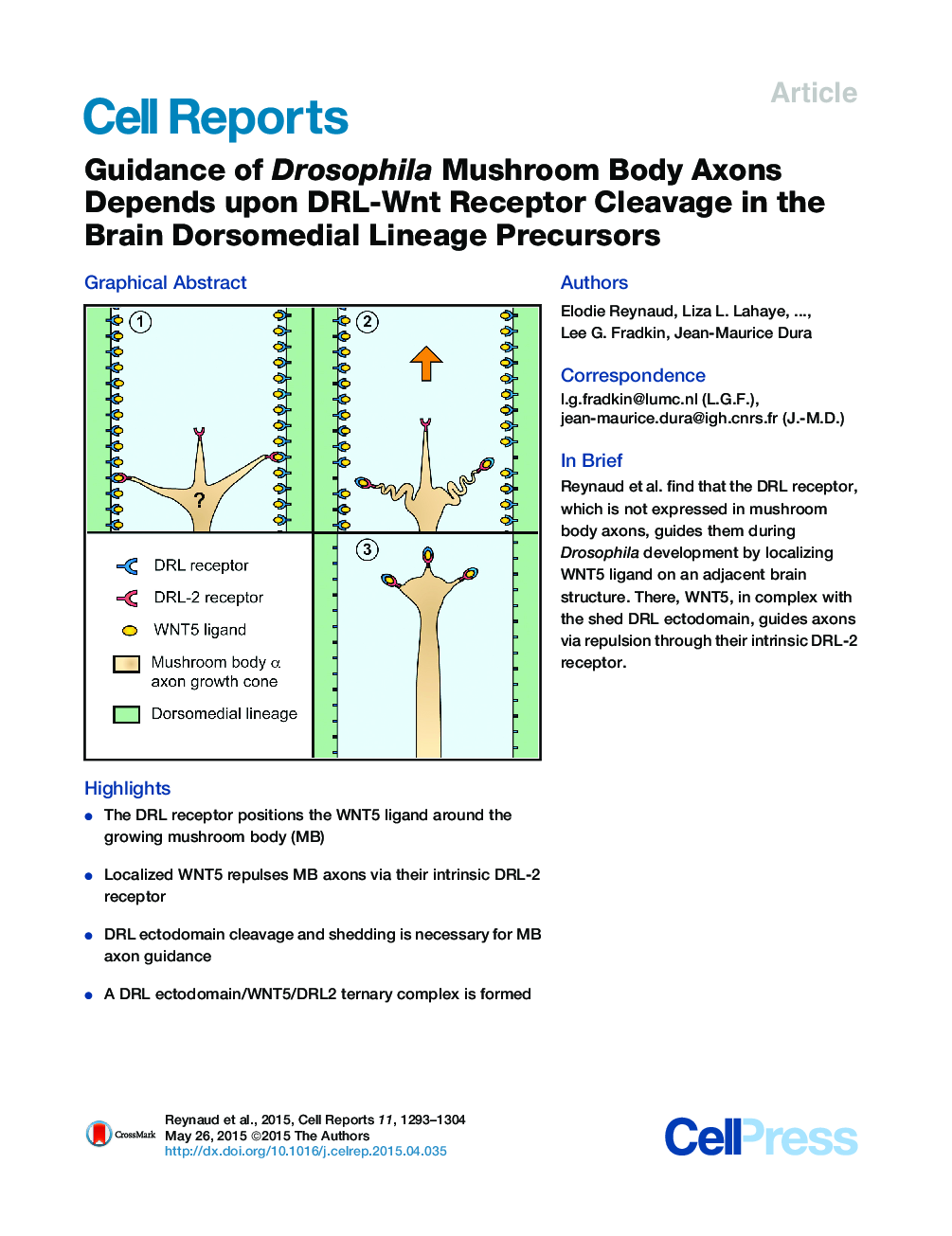| Article ID | Journal | Published Year | Pages | File Type |
|---|---|---|---|---|
| 2041311 | Cell Reports | 2015 | 12 Pages |
•The DRL receptor positions the WNT5 ligand around the growing mushroom body (MB)•Localized WNT5 repulses MB axons via their intrinsic DRL-2 receptor•DRL ectodomain cleavage and shedding is necessary for MB axon guidance•A DRL ectodomain/WNT5/DRL2 ternary complex is formed
SummaryIn vivo axon pathfinding mechanisms in the neuron-dense brain remain relatively poorly characterized. We study the Drosophila mushroom body (MB) axons, whose α and β branches connect to different brain areas. We show that the Ryk family WNT5 receptor, DRL (derailed), which is expressed in the dorsomedial lineages, brain structure precursors adjacent to the MBs, is required for MB α branch axon guidance. DRL acts to capture and present WNT5 to MB axons rather than transduce a WNT5 signal. DRL’s ectodomain must be cleaved and shed to guide α axons. DRL-2, another Ryk, is expressed within MB axons and functions as a repulsive WNT5 signaling receptor. Finally, our biochemical data support the existence of a ternary complex composed of the cleaved DRL ectodomain, WNT5, and DRL-2. Thus, the interaction of MB-extrinsic and -intrinsic Ryks via their common ligand acts to guide MB α axons.
Graphical AbstractFigure optionsDownload full-size imageDownload as PowerPoint slide
